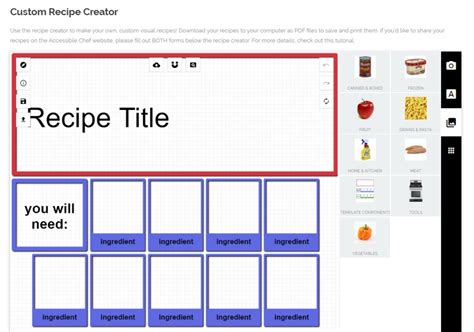Recipe Maker with Ingredients: Your Ultimate Guide to Culinary Creation
Creating delicious and satisfying meals starts with a well-planned recipe. This guide will walk you through the essential steps of crafting your own recipes, from listing ingredients to perfecting the cooking process. Whether you're a seasoned chef or a kitchen novice, mastering the art of recipe creation opens up a world of culinary possibilities.
Understanding Recipe Structure
A well-structured recipe is crucial for clear communication and successful execution. Here's a breakdown of the key components:
1. Title: Catchy and Descriptive
Your recipe title should be both enticing and informative. Think about what keywords someone might search for when looking for a similar recipe. For example, instead of "Cake," try "Moist Chocolate Fudge Cake with Raspberry Filling."
2. Ingredients: Precise and Organized
List your ingredients with precision, including quantities and units of measurement (e.g., cups, tablespoons, grams, ounces). Organize them logically, perhaps grouping them by category (e.g., dry ingredients, wet ingredients). Be specific: instead of "flour," specify "all-purpose flour."
3. Instructions: Clear and Concise
Write your instructions in a clear, concise, and step-by-step manner. Use active voice and avoid jargon. Number your steps for easy follow-along. Include visual cues where appropriate, such as "preheat oven to 350°F (175°C)."
4. Notes and Tips: Enhance the Experience
Add any helpful notes or tips to improve the cooking experience. This could include suggestions for substitutions, variations, or troubleshooting common issues. For example, "For a richer flavor, use dark chocolate instead of semi-sweet."
5. Yield and Prep Time: Essential Information
Specify the number of servings the recipe yields and the estimated preparation time. This helps users plan accordingly.
Crafting Your Recipe: A Step-by-Step Process
Let's create a sample recipe together. Let's make a simple Oatmeal Cookie Recipe.
1. Brainstorming: Defining Your Vision
Before you start, decide on your recipe's overall style and flavor profile. What kind of cookies do you want to make? What flavors will you incorporate? For our oatmeal cookies, we'll aim for a classic, chewy texture with a hint of cinnamon.
2. Ingredient Selection: Quality Matters
Choose high-quality ingredients that complement your desired flavor profile. Our oatmeal cookies will require:
- 1 cup (2 sticks) unsalted butter, softened
- ¾ cup granulated sugar
- ¾ cup packed brown sugar
- 2 large eggs
- 1 teaspoon vanilla extract
- 2 ½ cups all-purpose flour
- 1 teaspoon baking soda
- 1 teaspoon ground cinnamon
- ½ teaspoon salt
- 3 cups rolled oats
3. Writing the Instructions: Clarity is Key
Now, let's write the instructions in a step-by-step manner:
- Preheat your oven to 375°F (190°C). Line baking sheets with parchment paper.
- In a large bowl, cream together the butter, granulated sugar, and brown sugar until light and fluffy.
- Beat in the eggs one at a time, then stir in the vanilla.
- In a separate bowl, whisk together the flour, baking soda, cinnamon, and salt.
- Gradually add the dry ingredients to the wet ingredients, mixing until just combined.
- Stir in the rolled oats.
- Drop by rounded tablespoons onto the prepared baking sheets.
- Bake for 10-12 minutes, or until golden brown.
- Let cool on the baking sheets for a few minutes before transferring to a wire rack to cool completely.
4. Refining and Testing: Iterate and Improve
Once you've written your recipe, test it out! Taste and adjust seasonings as needed. This iterative process is key to perfecting your creation.
Optimizing Your Recipe for Online Success
To make your recipe stand out online, consider:
- High-quality photos: A visually appealing image can significantly increase engagement.
- Keywords: Use relevant keywords in your recipe title and description to improve search engine optimization.
- Social media sharing: Make it easy for others to share your recipe on social media platforms.
By following these steps, you can create delicious recipes and share your culinary expertise with the world. Remember, the key is to be precise, clear, and passionate about your creations!
